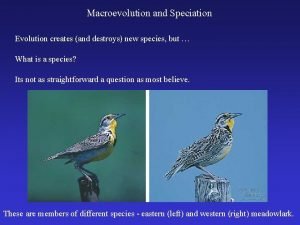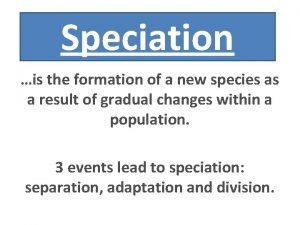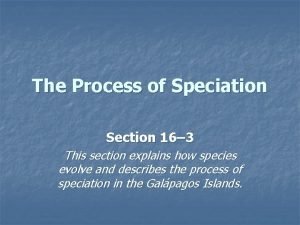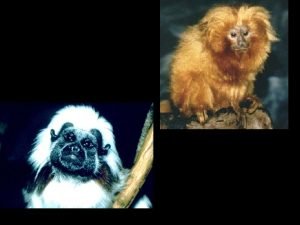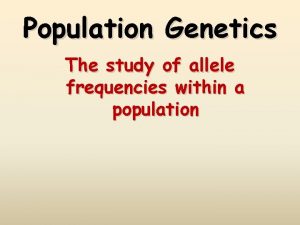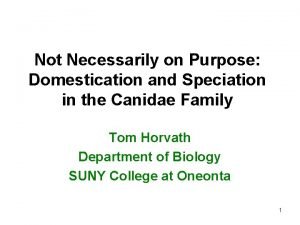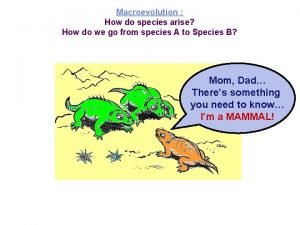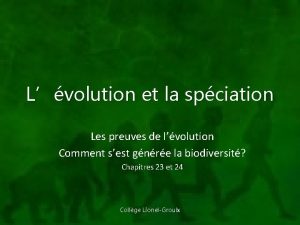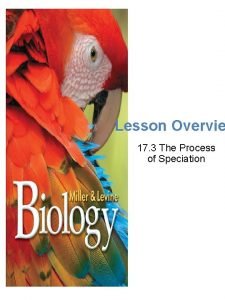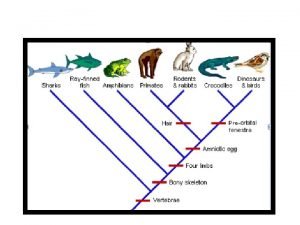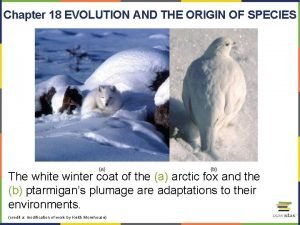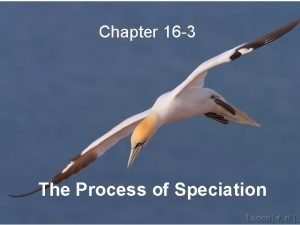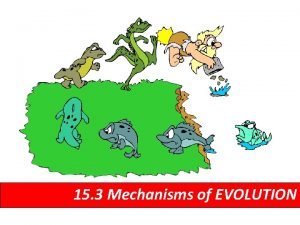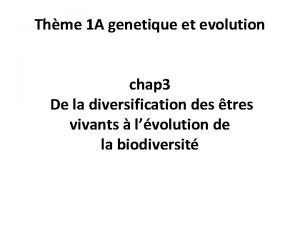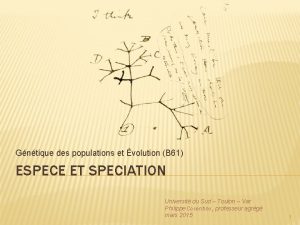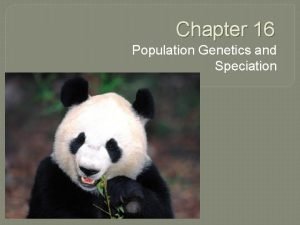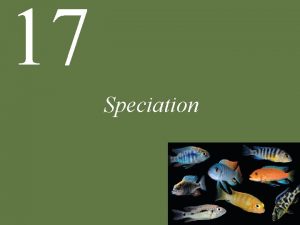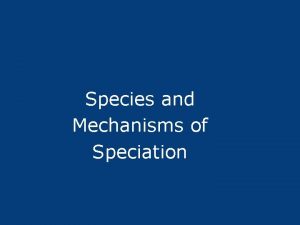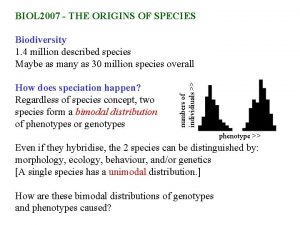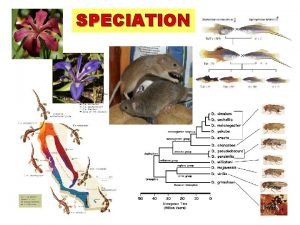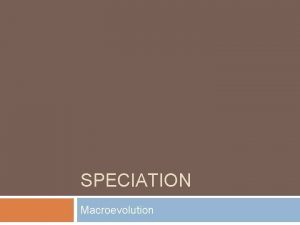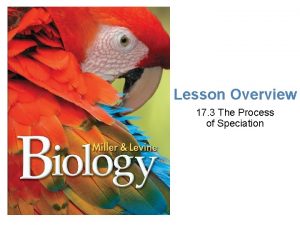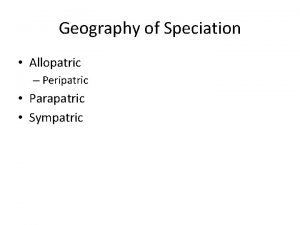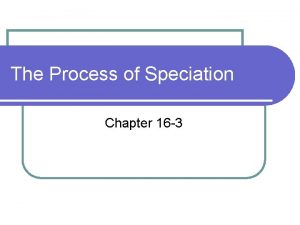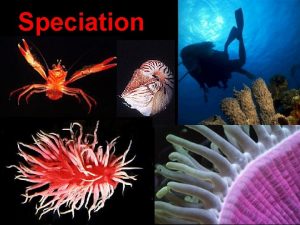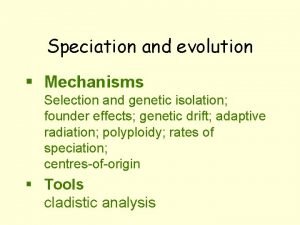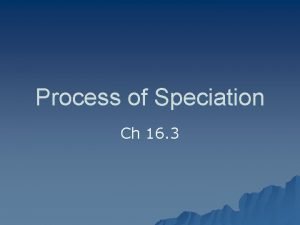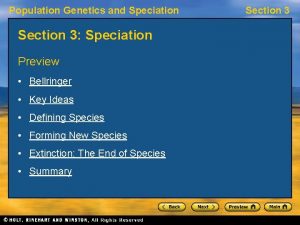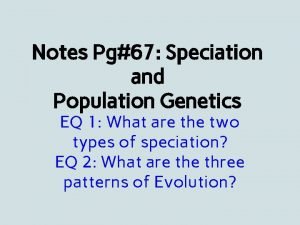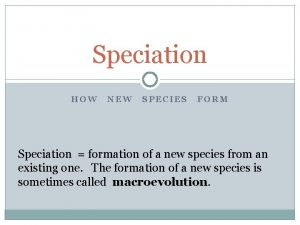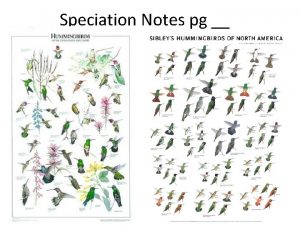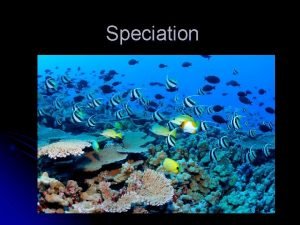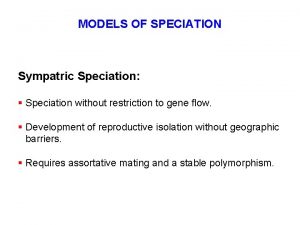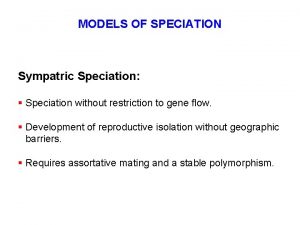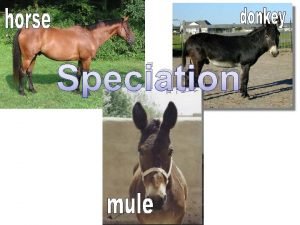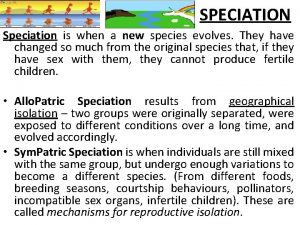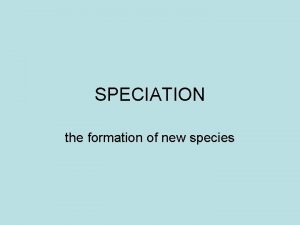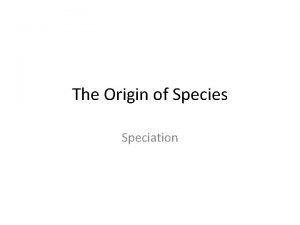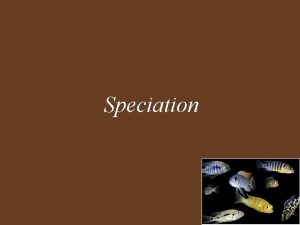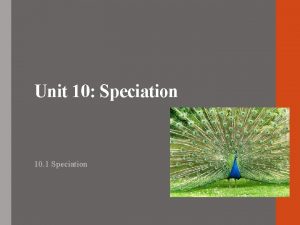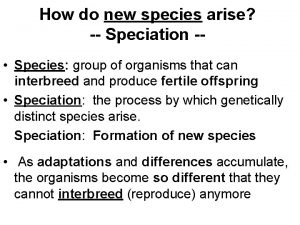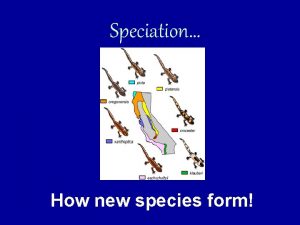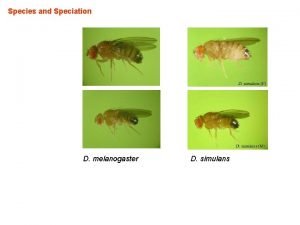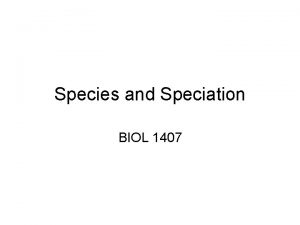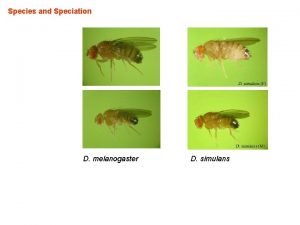How Species Form Speciation How do new species



































- Slides: 35

How Species Form: Speciation


How do new species form? • At what point can we say a new species has been made?

What are “species”? • Recall that it can be difficult to define species • Grey area between species due to evolution • Biological Species: o A reproductively compatible population • ie. They can interbreed under natural conditions

This definition has limitations! Eg. asexual organisms

Remember hybrids? Horses and donkeys have different chromosome numbers… this ultimately makes mules infertile

Just ONE Ingredient needed for Speciation REPRODUCTIVE ISOLATION

Reproductive Isolation • Once organisms are sufficiently different or separated that they can no longer breed, then they no longer share their gene pool • This means their allele frequencies will change independently of each other

Two Paths of Speciation (1) Transformation / Anagenesis • One species gradually takes on new characteristics over time (2) Divergence / Cladogenesis • Promotes biological diversity • One species branches off into two or more different species

Transformation caused by directional selection

Divergence Caused by disruptive selection or other means of reproductive isolation



There approximately 6500 languages spoken on Earth today

Reproductive Barriers • Geographic Barriers o. Egs. rivers, oceans, mountains • Biographical Barriers o. Prezygotic and Postzygotic

Prezygotic Postzygotic

Pre-zygotic Barriers: prevent fertilization 1. Behavioural Isolation • Courtship displays • Other mating cues • egs. specific song by bird species pheromones: chemical signals / scents

1. Behavioural Isolation ? ? ? Male “Red “Blue Plumed Bird of Paradise” Male “Greater Bird of Paradise” Female “Greater Bird of Paradise”

Pre-zygotic Barriers: prevent fertilization 2. Temporal Isolation o Breed at different times of the day, seasons or year

Temporal Isolation

Pre-zygotic Barriers: prevent fertilization 3. Ecological Isolation o Similar species, living in different habitats within an ecosystem eg. garter snakes: T. siratalis lives near water T. ordinoides lives in open fields and meadows

Ecological Isolation

Pre-zygotic Barriers: prevent fertilization 4. Mechanical Isolation o Anatomical incompatibility prevents mating e. g. flowers are adapted to specific pollinators

Mechanical Isolation

Pre-zygotic Barriers: prevent fertilization 5. Gametic Isolation o Gametes of different species cannot recognize eggs from other species

Gametic Isolation

Post-Zygotic Barriers : after fertilization • prevent offspring from developing into a viable, fertile hybrid 1. Zygotic mortality • Genetic incompatibility stops development of the embryonic hybrid 2. Hybrid infertility • Results in sterile offspring e. g. mule 3. Hybrid inviability • 1 st generation of hybrids are viable and fertile, but if they mate with another hybrid or parent species the offspring are sterile or weak


Modes of Speciation


Sympatric Speciation?


Parapatric Speciation

Parapatric Speciation • distinct species with a contact zone between populations where some hybridization may occur. • They remain distinct due to sexual selection and different selection pressures

 Antelope squirrel allopatric speciation
Antelope squirrel allopatric speciation Speciation, or the formation of new species, is
Speciation, or the formation of new species, is Species
Species Section 16-3 the process of speciation
Section 16-3 the process of speciation Speciation
Speciation How does speciation occur
How does speciation occur Allopatric speciation example
Allopatric speciation example Factors affecting gene frequency slideshare
Factors affecting gene frequency slideshare Canidae cladogram
Canidae cladogram Hybrid fertility
Hybrid fertility La spéciation
La spéciation Steps of speciation
Steps of speciation Speciation def
Speciation def Ecological speciation
Ecological speciation The origin of species manga chapter 18
The origin of species manga chapter 18 Section 16–3 the process of speciation
Section 16–3 the process of speciation Types of speciation
Types of speciation Speciation ecureuil antilope
Speciation ecureuil antilope Scala naturae
Scala naturae Example of parapatric speciation
Example of parapatric speciation Population genetics and speciation worksheet answer key
Population genetics and speciation worksheet answer key Speciation
Speciation Natural hybridization and evolution
Natural hybridization and evolution Parapatric speciation
Parapatric speciation Parapatric speciation
Parapatric speciation Speciation process
Speciation process Speciation process
Speciation process Parapatric speciation
Parapatric speciation Sympatric speciation
Sympatric speciation Section 16-3 the process of speciation
Section 16-3 the process of speciation Monophyletic groups
Monophyletic groups Parapatric speciation
Parapatric speciation Speciation
Speciation Section 16-3 the process of speciation
Section 16-3 the process of speciation Modes of speciation ppt
Modes of speciation ppt Genetic drift
Genetic drift
